Merrygill Viaduct
Merrygill Viaduct
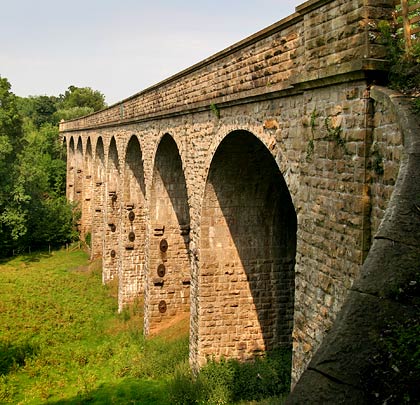
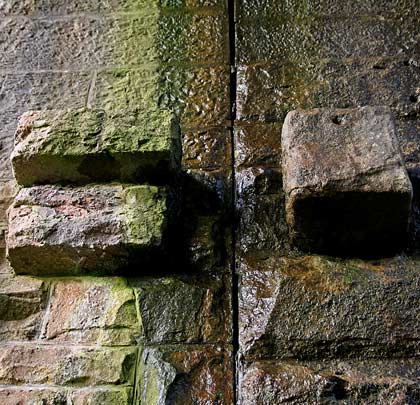
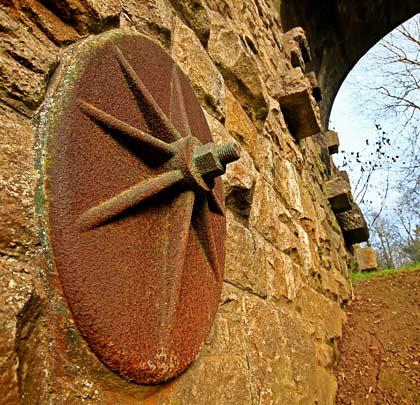
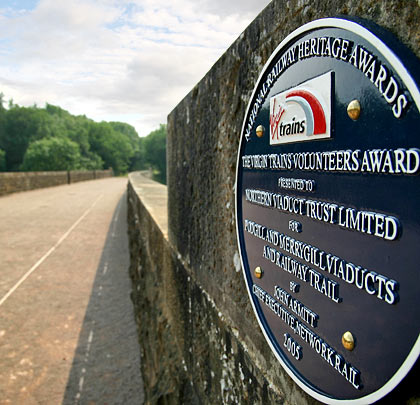
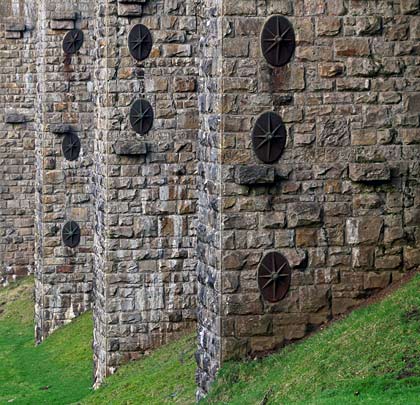
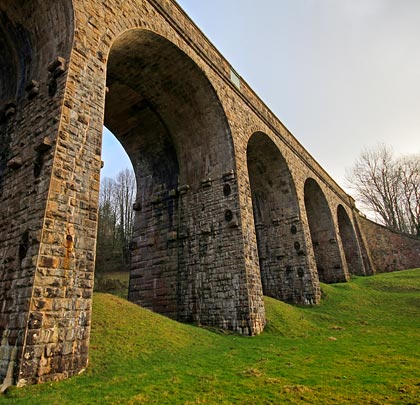






The South Durham & Lancashire Union Railway fought its way over Stainmore Summit, 1,370 feet above sea level. Opened on 4th July 1861 as a single-track route, the steep western descent into Kirkby Stephen took it over three masonry viaducts – Hatygill, Merrygill and Podgill – all engineered by Sir Thomas Bouch.
Merrygill has a slightly curved alignment, with 9 arches each 30 feet in span. It conveyed the line across Hartley Beck for a distance of 122 yards, reaching 78 feet high at its peak.
Built by contractor Chambers & Hilton for £3,721, the inside faces of the piers still have projecting stones at the top, used to support the timber centering for construction of the arches. The abutments have curved wing walls.
The route was an immediate success and, during the 1880s, was hauling a million tonnes of coke annually to Cumbria’s coastal blast furnesses. Between 1889-92, to satisfy this demand, a second line was added to carry westbound trains. This involved building a second viaduct to the south side of the first, then tying the two together. The complete structure is 25’7″ wide.
Several sections of parapet were removed to create refuges, with cast iron plates inserted flush with the outer edge of the stonework. Both abutments feature pilasters, topped by monumental stones. Three of the piers have been repaired with tie bars and pattress plates.
The through route closed in 1962. Although a short section survived until 1975 to serve Hartley Quarry, the siding diverged from the main line just to the west of Merrygill Viaduct, rendering it redundant.
The structure – now Grade II listed – was acquired by the Northern Viaduct Trust in 2005 for £1. A restoration programme was initiated and it now forms part of the NVT’s ‘railway trail’.







